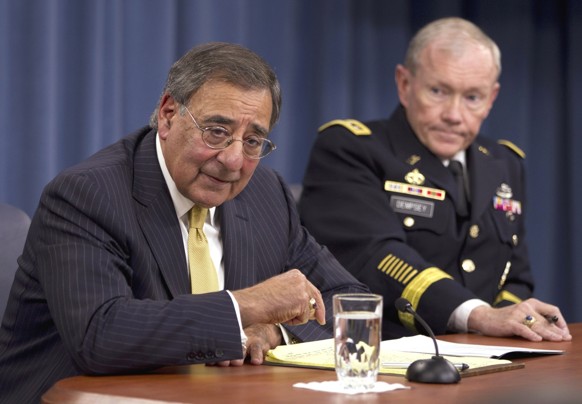Later today, President Obama and the Pentagon’s senior leaders will unveil a new national security strategy as a harbinger to potential large cuts to the defense budget over the coming decade. Early reports are not promising.
Writing for the Washington Post, Craig Whitlock and Peter Whoriskey report that the plan “will consolidate missions and downsize the ambitions of the armed forces as they adjust to a new era of austerity” and constitute “the largest cuts to the defense budget since the end of the Cold War.”
Some real strategic decisions are reportedly called for, including “a greater shift toward Asia in military planning and a move away from big, expensive wars like Iraq and Afghanistan, which have dominated U.S. operations for most of the past decade.”
This follows last year’s announcement of a reduction of 27,000 soldiers and 15,000 to 20,000 marines. Oddly, despite having been back benchers during the two hot wars the United States has fought over the last decade, “The Navy and Air Force are expected to fare better because they will play an instrumental role in the administration’s strategy for Asia, where the United States is seeking to counter China’s expanding military power.” Indeed, “The new strategy document explicitly states that the size of the Army and Marine Corps will no longer be governed by the need to conduct large-scale and long-term stability operations like those in Iraq and Afghanistan.”
That said, “The strategy review will not spell out potential $480 billion to $1 trillion in spending cuts that the Pentagon is facing over the next decade. Details of those reductions will begin to trickle out next month, when the Obama administration releases its proposed federal budget for 2013.”
All of this should remind old hands of the early 1990s. Despite being entangled in a series of peacekeeping/stabilityoperations/operations other than war missions, the Bottom-Up Review and subsequent Quadrennial Defense Reviews planned for a future of major regional conflicts modeled on the wildly unlikely scenario of two nearly-simultaneous wars in Iraq and the Korean peninsula. Yet, the United States military has spent the ensuing two decades fighting brushfire wars.
To be sure, there was the Shock and Awe Lite invasion of Iraq, in which rapid dominance was achieved in three weeks of fighting. But we learned, once again, that a military organized and equipped for major wars wasn’t necessarily one equipped to fight sustained small wars.
In the two-plus decades since the end of the Cold War, Pentagon planners have been looking for another peer competitor around which to ground doctrine and plan procurement. China has been the obvious candidate the entire time and now appears to have been finally seized upon. But the notion of a World War III with Beijing as ground zero is wildly fanciful, if not outright laughable. And it means that America’s tighter defense budget will be disproportionately allocated to systems not geared to the wars our forces will inevitably fight.
I heartily endorse the idea of moving away from big, expensive wars like Afghanistan and Iraq. But we now have two decades of bipartisan elite consensus sustained over four successive presidencies that point to the extreme unlikelihood of that happening.
A wise man once noted that “you go to war with the army you have, not the army you might want or wish to have at a later time.” It looks as though the Obama administration is going to build one for a future it would like to have, not the one that’s most likely.
James Joyner is managing editor of the Atlantic Council.
Image: panetta-dempsey-austerity.jpg
